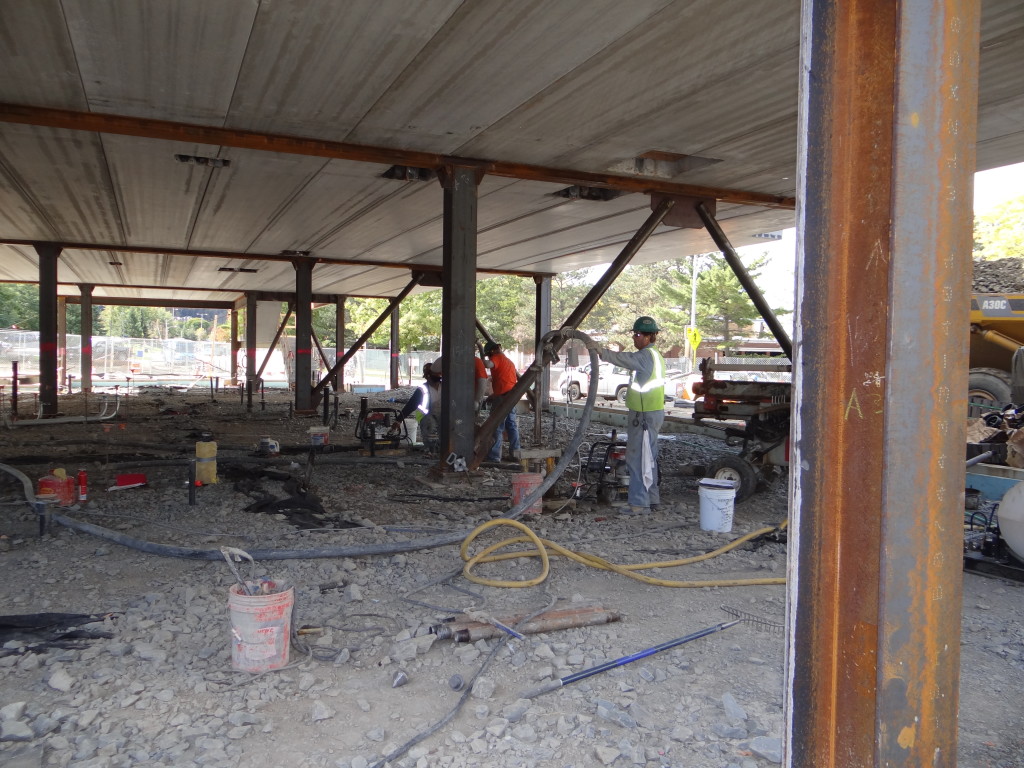New York –
During construction of two, steel-frame and concrete-panel dormitory structures with column and wall loads of 950 kips and 7 klf respectively, settlement in excess of three inches was observed in several interior column and exterior wall foundations. It was determined that the observed settlement was limited to foundation locations founded on existing and newly placed structural fill overlying sensitive silts. The settlement was noticed after construction of two stories of steel framing and concrete floor panels were installed for Building No. 5; and after the foundations of Building No. 8 were in place.
We worked closely with the project team and the geotechnical engineer to develop a compaction grouting program to improve the soils below the delineated columns and exterior wall foundations. The program was designed to reduce the risk of unacceptable differential or total settlement, as well as raise the column foundations to as close to the proposed elevations as possible. When the grouting program started, settlement of several of the columns exceeded three inches. Prior to starting the grouting program, settlement of several of the columns exceeded three inches. Lifting of the columns was achieved mostly by using a top-down, bottom-up procedure. We installed the grout casing to 5 feet below the footing and injected grout to the bottom of the foundation. The casing was reinstalled into competent bearing material (18′ to 30′), and grout was injected in one foot ascending stages. The project team set criteria for the maximum differential settlement between two adjacent columns, at 3/4 inch. We lifted each column in a sequence that minimized angular distortions. The bottom-up procedure was used for the remainder of the injection points.
We stabilized the foundation areas while construction of the dormitories continued. This efficient program also allowed for the project to progress earlier than expected. The grouting was performed from competent bearing soils to the existing bottom of footing elevations (ranging from 17 to 34 feet deep – average depth of approx. 19 feet), at 325 injection locations. Upon completion, approximately 6,172 linear feet of drilling and 849 cubic yards of grout were injected.


